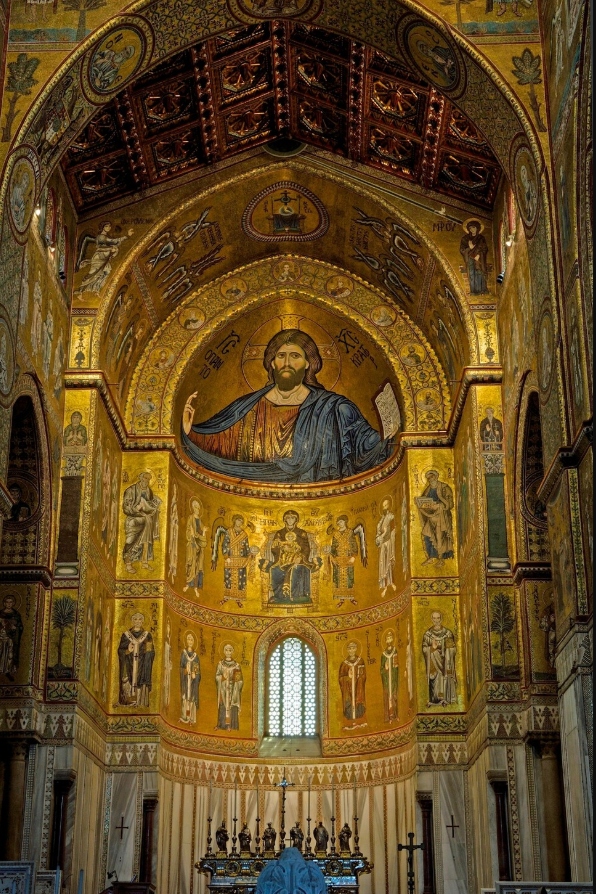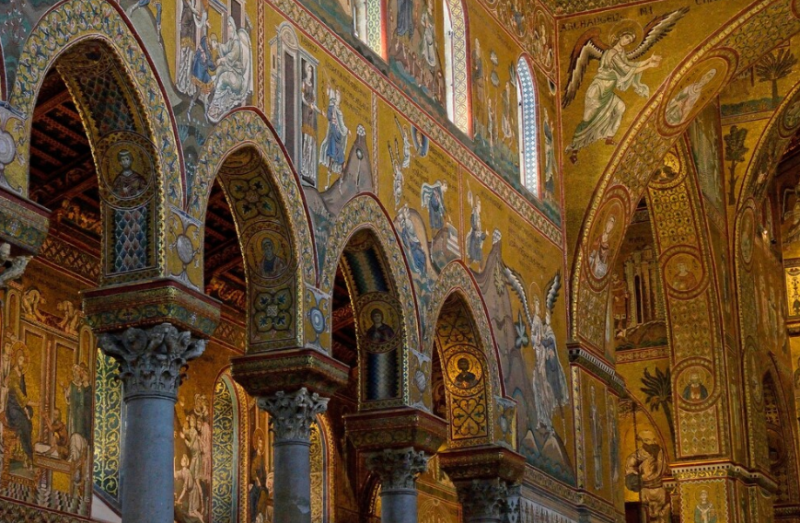Built in the 12th century under Norman rule, it has the largest Byzantine mosaics in the world, second only to Hagia Sophia
The cathedral Monreale, a UNESCO World Heritage Site in Sicily, it has been restored presenting the 12th century mosaics in their original splendor.
The project, which was partly funded by the European Union, involved a thorough cleaning and repair of the glass tiles, as well as the installation of a state-of-the-art lighting system.
The cathedral, commissioned by the Norman King William II, has one of the largest collections of interior mosaics in the world. The glittering artwork depicts scenes from the Old and New Testaments, crafted using approximately 2.2 tons of pure gold and spanning over 6,500 square meters (7,774 sq ft),
“The church is unique in the world“, said Father Nicola Gaglio, the local priest and adds: “The beauty of his art… hits you, hurts you, makes you suffer, creates passion and opens the heart at the same time».
Among the most impressive mosaics is the imposing “Christ Almighty» in the arch. The cathedral in Monreale, Palermo, is considered the most beautiful of the Norman churches in Sicily. The mosaics were made with 2,200 kilograms of pure gold, experts estimate. Craftsmen from Istanbul also participated in the work. Byzantine mosaics are among the most magnificent in the world.
The magnificence of the mosaics is highlighted by a new lighting system designed by the Austrian company Zumtobel. “The main focus is to bring out the rich colors of the mosaics, especially the dominant gold tones,” explained Zumtobel executive Matteo Cundari.
Monreale Cathedral is testament to the vision of King William II, who is said to have been inspired by a dream in which the Virgin Mary urged him to build a church on the same spot. Legend has it that a treasure was discovered from the roots of a locust tree where the king rested and the gold coins financed the construction of the cathedral.
Now, this Unesco World Heritage site has undergone extensive restoration to bring it back to its former glory.
The restoration took over a year, during which time the cathedral was turned into a building, with a maze of scaffolding erected on the altar and transept.
Local experts from the Italian Ministry of Culture led the interventions, starting with the removal of a layer of dust that had accumulated on the mosaics over the years.
They then repaired some of the tiles that had lost their enamel and gold leaf, making them look like black spots underneath.
The mosaics were last partially restored in 1978, but this time the intervention had a much wider scope and included the replacement of the old lighting system.
*UNESCO photos
Source :Skai
I am Frederick Tuttle, who works in 247 News Agency as an author and mostly cover entertainment news. I have worked in this industry for 10 years and have gained a lot of experience. I am a very hard worker and always strive to get the best out of my work. I am also very passionate about my work and always try to keep up with the latest news and trends.













